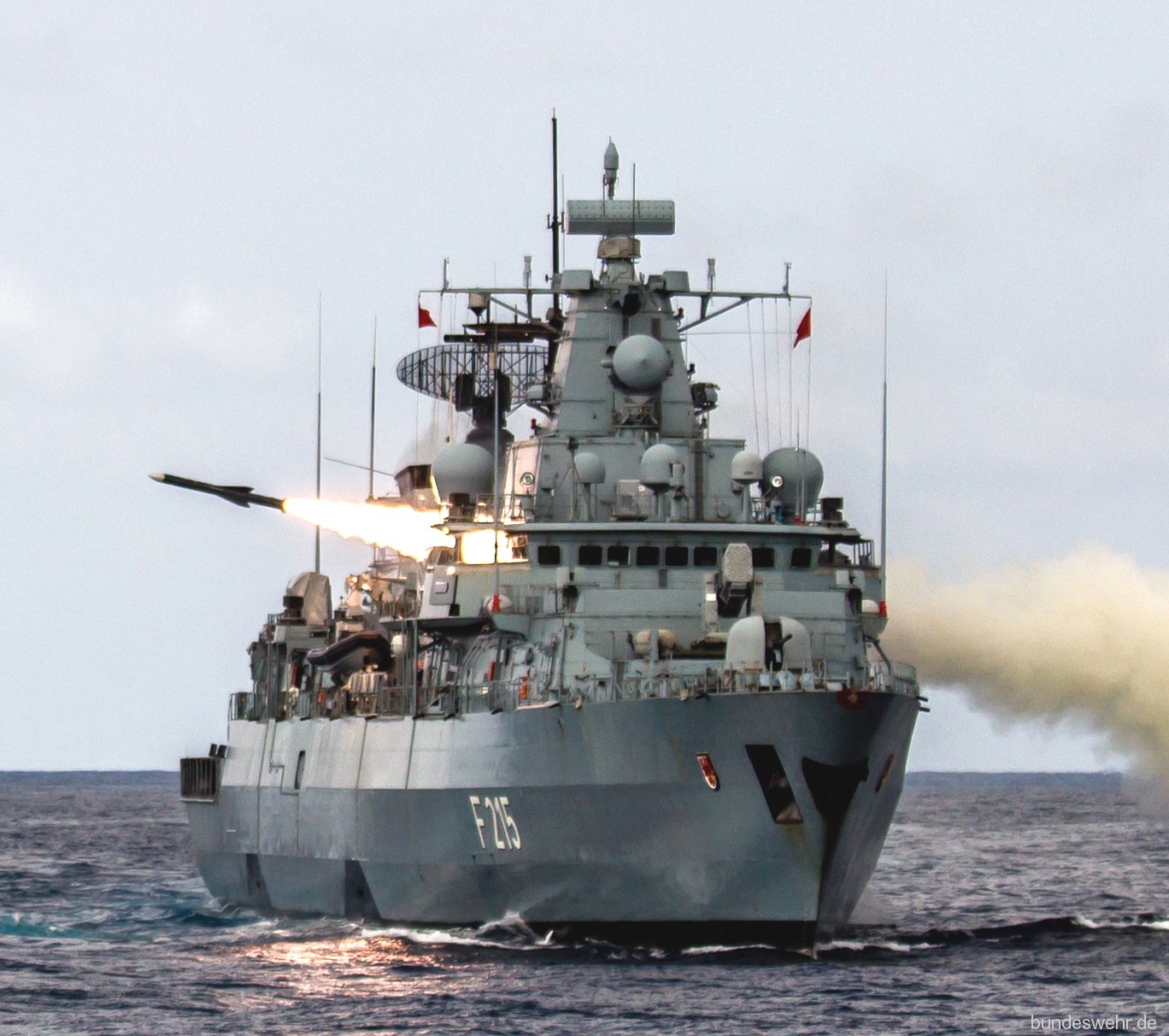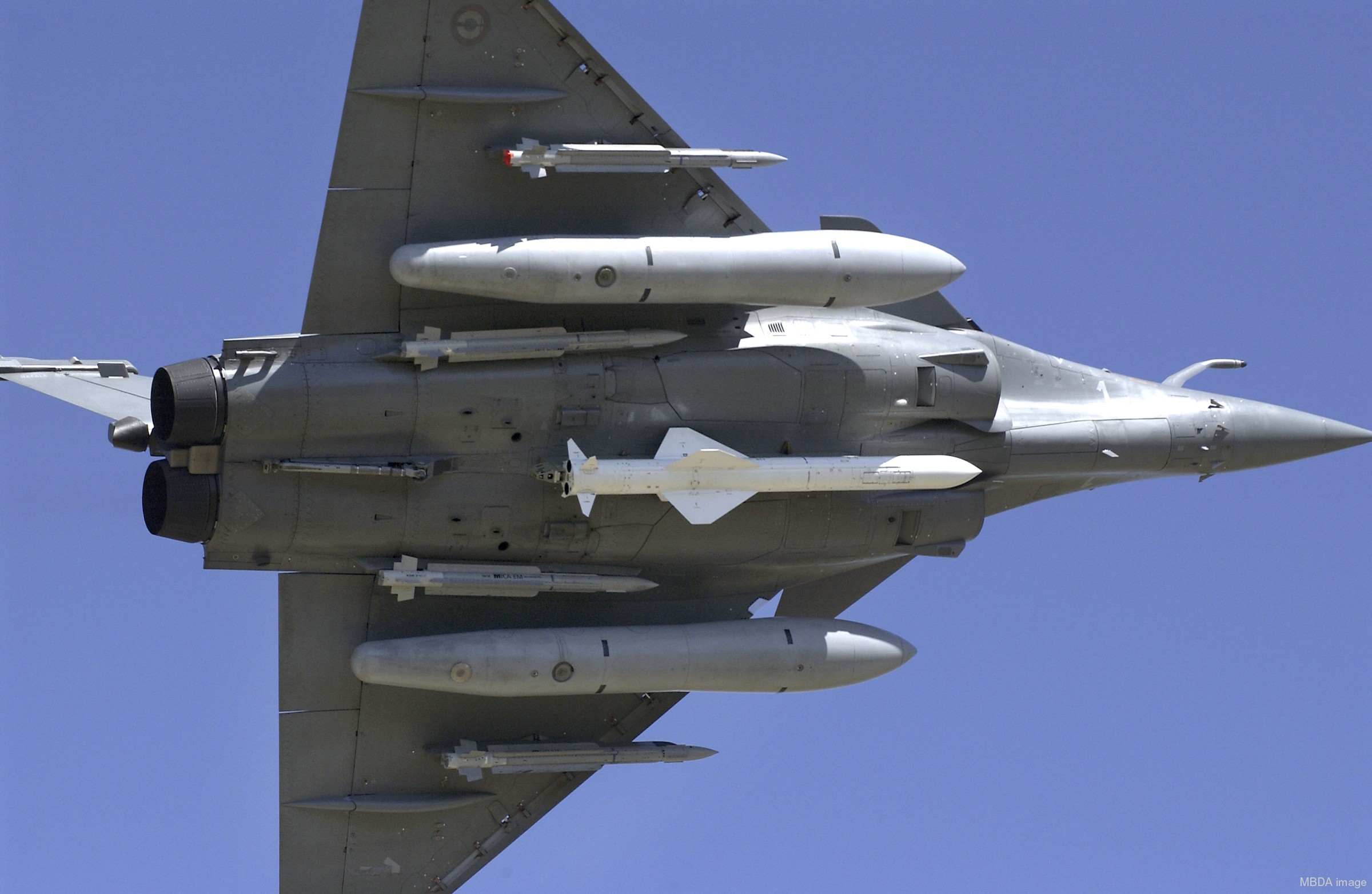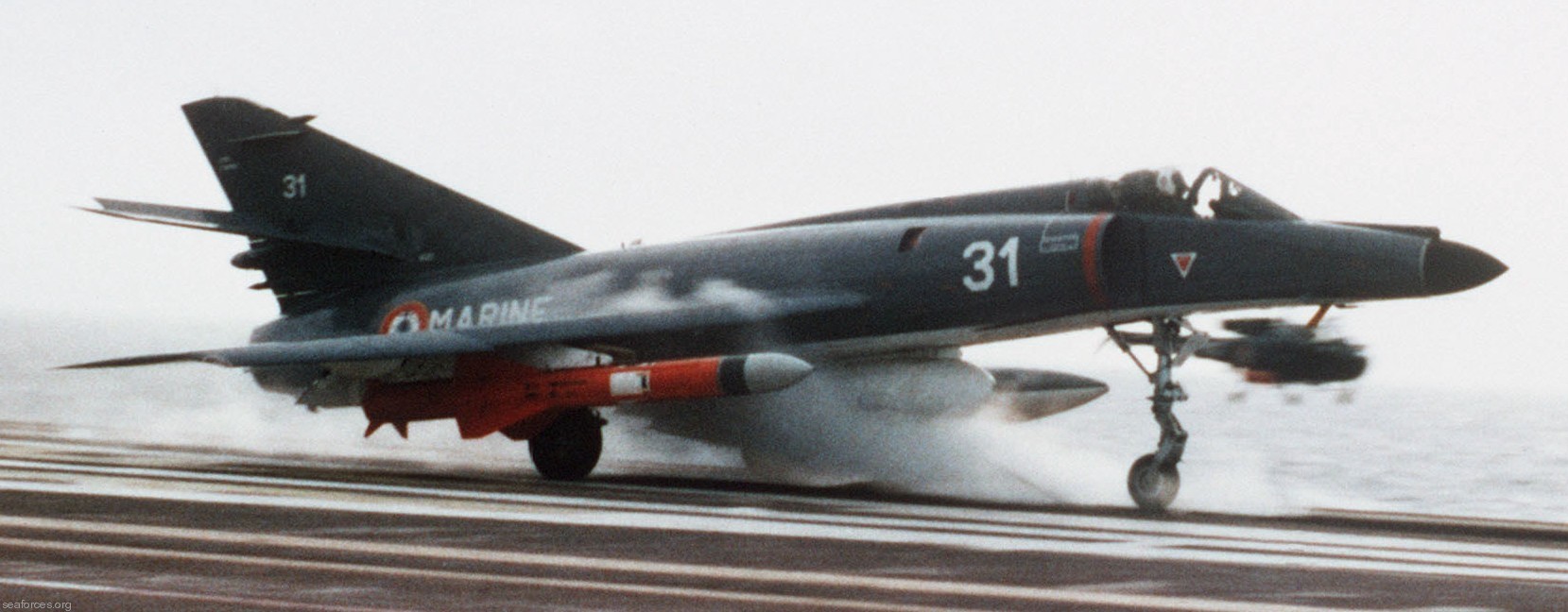The MM38 / AM39 / SM39 / MM40 Exocet ('Flying Fish) is a
French-built anti-ship missile whose versions can be launched from
surface vessels, submarines, helicopters and fixed-wing aircraft.
Development began in 1967 by Nord as a ship-launched weapon named
the MM38. A few years later, Aerospatiale and Nord merged. The basic
body design was based on the Nord AS-30 air-to-ground tactical
missile. The sea-launched MM38 entered service in 1975, whilst the
air-launched AM39 Exocet began development in 1974 and entered
service with the French Navy five years later in 1979.
The relatively compact missile is designed for attacking small- to
medium-size warships (e.g., frigates, corvettes, and destroyers),
although multiple hits are effective against larger vessels, such as
aircraft carriers. It is guided inertially in mid-flight and turns
on active radar homing late in its flight to find and hit its
target. As a countermeasure against air defence around the target,
it maintains a very low altitude while inbound, staying just one to
two meters above the sea surface. Due to the effect of the radar
horizon, this means that the target may not detect an incoming
attack until the missile is only 6,000 metres (3.7 mi) from impact.
This leaves little time for reaction and stimulated the design of
close-in weapon systems (CIWS).
Its solid propellant rocket motor gives the Exocet a maximum range
of 70 kilometres (43 mi; 38 nmi). It was replaced on the Block 3
MM40 ship-launched version of the missile with a solid-propellant
booster and a turbojet sustainer engine which extends the range of
the missile to more than 180 kilometres (110 mi; 97 nmi). The
submarine-launched version places the missile inside a launch
capsule.
In service in more than 30 countries (Navy, Air Force).
Common specifications:
Designer: Nord Aviation,
France (1967-70) / Aérospatiale, France (1970-74)
Manufacturer:
Aérospatiale (1979-99) / Aérospatiale-Matra (1999-2001) / MBDA
(2001-present)
Diameter: 34.8 centimeters (1 ft 1.7 in)
Wingspan: 1.35 meters (4 ft 5 in)
Length: 4.69 - 6 meters
(with booster)
Weight: 655 - 780 kg
Warhead: 165 kilograms (364 lb) HE blast and
pre-fragmented effects
Engine: solid propellant engine (MM40 Block 3 = turbojet)
Flight altitude: sea-skimming
Speed: Mach 0,93 (1,148 km/h / 713 mph)
Guidance: Inertial guidance during cruise / active
RF homing / GPS / Radio altimeter
Versions:
MM38 = surface-launched
AM39 = air-launched
SM39 = submarine-launched
MM40 = surface-launched
Exocet MM38
(surface-launched) - deployed on warships.
Range: 42 km.
Basic variant. No longer in production.
|
Exocet
AM38
(helicopter-launched - tested only)
Exocet
AM39
(air-launched) - deployed on 14 types of aircraft
(combat jets, maritime patrol aircraft, helicopters).
In its latest Block 2 Mod 2 version, EXOCET AM39 has been
fully digitised to meet the requirements of the latest
generation of fixed and rotary wing aircraft.
Featuring long range operation, depending on launch altitude
and speed, EXOCET AM39 enables the aircraft to remain at
safe range from enemy air defences. When carrying out a low
altitude attack, the missile may also be launched under the
target ship’s radar coverage. Ingress is at a very low
sea-skimming altitude.
Range: up to 70 km (depending on the altitude and speed of
the launch aircraft)
|
Exocet SM39
(submarine-launched) - B2 Mod 2: deployed on submarines.
SM39 features all weather capability, sea skimming
flight, solid propellant and a high kill warhead.
With a range of 50 km, the missile provides tactical
Flexibility and versatility (including urgent firing) thanks
to the system’s large launch envelope. Launched from s
submarine’s standard 21-inch Torpedo Tube, Housed in a
water-tight, highly resistant, propelled and guided
underwater vehicle, the aerial missile is ejected as soon as
it breaks the surface, to ensure a very low culmination
altitude. It then rapidly homes into the target at sea
skimming level: it uses an inertial navigation system
followed by autonomous terminal guidance from an active RF
seeker.
Range: > 50 km
|
Exocet SM40
(submarine-launched), deployed on submarines, is the
successor of the EXOCET SM39.
Building on a successful spiral evolution, the EXOCET SM40
integrates the latest technologies developed for the Exocet
MM40 B3C, including a new coherent J-band RF seeker and
associated missile algorithms developed for high-intensity
context. The EXOCET SM40 will benefit from a renewed
capability to discriminate and identify targets in a complex
and highly demanding electronic warfare environment.
It also features a doubled range in the class of 120 km with
a new propulsion system with a turbojet engine to regain the
stand-off distance in anti-submarine warfare. These new
capabilities are essential to ensure submarine
self-protection against all kinds of modern and future
threats and defeat highly defended vessels.
Range: 200 km
|
Exocet MM40
(surface-launched) - Block 1, Block 2, Block 3 and Block 3c:
deployed on warships (box or tube launchers) and in coastal batteries.
EXOCET MM40 BLOCK 3 provides a very long range capability,
even in adverse weather conditions:
- 200 km class operational range at very low altitude
against all classes of warship
- All-weather capability, thanks to an active RF seeker
- High hit probability even against moving targets
- Outstanding penetration capability against enemy air
defences
- High flexibility to cope with complex attack scenarios
A new navigation and propulsion package on EXOCET MM40 BLOCK
3 allows for the programming of 3D way-points, optimised
trajectories and simultaneous terminal attacks of multiple
missiles.
A single jettisoned rocket booster at launch and a new
turbojet engine, giving operational flexibility and long
range engagement.
EXOCET MM40 BLOCK 3 is compatible with most of the EXOCET
logistics support assets already in service. Its launching
system is interoperable with all MM40 versions, thus
enabling a smooth transition to BLOCK 3.
Range: 72 km for the Block 2, > 200 km for the Block 3
EXOCET MM40 BLOCK 3c
provides a very long range capability, even in adverse
weather conditions and in highly challenging Electronic
Warfare environment.
- 250km class operational range at very low altitude against
all classes of warship.
- New technology J-band active coherent seeker with adaptive
search patterns with improved detection, selectivity and
ECCM in all weather conditions.
- High kill against the most strongly defended surface
targets
- Outstanding penetration capability against enemy air
defences
- Comprehensive Mission Planning System with high
flexibility to cope with complex attack scenarios
EXOCET MM40 BLOCK 3c allows operational flexibility thanks
to the programming of 3D waypoints, optimised trajectories
and simultaneous terminal attacks of multiple missiles.
The launching system and mission planning/firing
installation is interoperable with current MM40 BLOCK 3
version, thus enabling a smooth transition.
Range: > 250 km
|
sources: MBDA, wikipedia
|










































